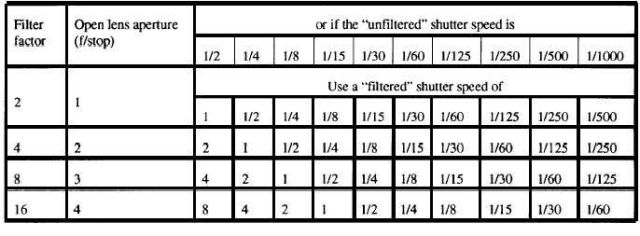Any tips on using and Filters?
I bought three and Filters for my Nikon today in hope of perfecting my photography. Now, so far most of my work has been classed as 'snapshots' (totally agree, check Instagram: @ishayc0). After setting up my Flickr ( ), I wanted to start using said filters for daytime long exposures. However, I'm not quite sure what you would use the filters for (I know, bad idea buying without Really knowing). So I thought maybe someone can point out their main uses and what situations to use them in.
Filters are ND2, ND4 & ND8.
Go photograph a waterfall or river rapids.

Stick on the ND8, and shoot in the evening after sunset, or in the morning before sunrise.
and filters are used to reduce the light entering the camera, they have no other use.
An ND8 reduces light by 3 stops, ND4 by 2, ND2 by 1. Stack them together and you can get 5 stops less light. However if you stack too many filters you may get vignetting, but you can crop it off.
So for example on a sunny day f/16 at ISO 100, 1/125th <<<--using the Sunny 16 Rule
5 stops less light will give you:
f/16 at ISO 100, 1/4 second
f/22 at ISO 100, 1/2 second
2 x ND8s stacked, would give you 6 stops
so: f/22 at ISO 100, 1 second
You'll really have to wait until it's darker/early evening/dusk/dawn to achieve longer exposures, or get a more powerful and filter.
Variable and filters can be more useful for shooting during bright sunshine.
And filters cut the amount of light which gets to the camera. The higher the number, the more light that gets cut.
One of the main uses of them is to take very long exposures - people define "long" differently, but it's in seconds rather than fractions of them. The sea is a popular subject for a long exposure, as it gives the water a silky look. Similarly, if you shoot near a busy road, you can get light trails, which are also popular.
Long exposures look like these kind of pictures
You'll get the best results from trial and error. Depending on how light it is outside, the ND2, 4 and 8 will let you shoot down to (X) seconds, and (X) will increase as the light goes down.
One other thing: you WILL need a tripod if you're going to be doing these kinds of long exposure. There's no way that you can do it handheld.
Try them out and see what you get. Long exposures can be a lot of fun.
The and (neutral density) filter blocks a portion of the light that would otherwise contribute to the exposure. The values ND2 - ND4 - ND8 are called "filter factors".
A Filter Factor tells us how to much adjustment we must apply to compensate for the light loss induced by a filter. The Filter Factor compensation is applicable to all filters be they neutral or polarizing or filters of color.
How to apply a filter factor?
As a multiplier:
We multiply the exposure time without filter by the FF to calculate a revised exposure time with the filter mounted.
Example 1: The unfiltered exposure time is 1/125 of a second. The FF of the filter we will mount is 4. The math is 1/125 X 8= 1/15 of a second.
Example 2 the unfiltered exposure is 1 second. The FF = 8. The revised exposure is 1 X 8 = 8 seconds.
As a divisor: If a hand-held light meter is in use, we divide the ISO of the film or camera setting by the FF and re-set the meter to this revised ISO. Caution, this applies to hand-held light meters. ISO in use is 200, the FF is 8, the revised FF is 100 8 = 25.
Using our finders:
Gray hairs like me, count on our fingers in powers of 2. Thus if the FF = 8, we count on our fingers 2 - 4 - 8 (that's three fingers). This tells us to open up 3 f-stops. If the FF is 16, we count 2 - 4 - 8 - 16, that's 4 fingers, we open up 4 f-stops. The f-stops are deliberately set in increments that double or half the exposure. In other words a 2X incremental change.
Fitters are stackable: You can mount two or more filters on the camera. This is possible but you need to understand that we mount a filter for a benefit. All filters induce a disturbance to the image forming rays. This distortion is likely slight but when filters are stacked the error is compounded.
When you stack filters, we must figure out the total FF or the system.
We do this by multiplication.
Stack a FF 2 with an FF 4 with an FF 8 and the total FF is 2X4X8= 64. If we count on our fingers in powers of 2 to get 64 we count 2X 2X 2X 2X 2X 2X = 64. That's 6 fingers or 6 f-stops.
If the exposure without filter was 1/250 @ f/11 the revised exposure time is 1/250 X 64 = 1/25 of a second. If the exposure time was 1/60 of a second, the revised exposure time is 1/60 X 64 = 1 second. 
- Can I use regular CPL filters as rear drop-in filters?
- Does any one have any tips? Or better yet examples?
- I have a nikon d3100 and i'm looking for new lenses and filters?
- How to take coloured pictures using the P, A, S and M modes using Nikon D60?
- Will any of these circular polarizer filters work on a Nikon D5100?
